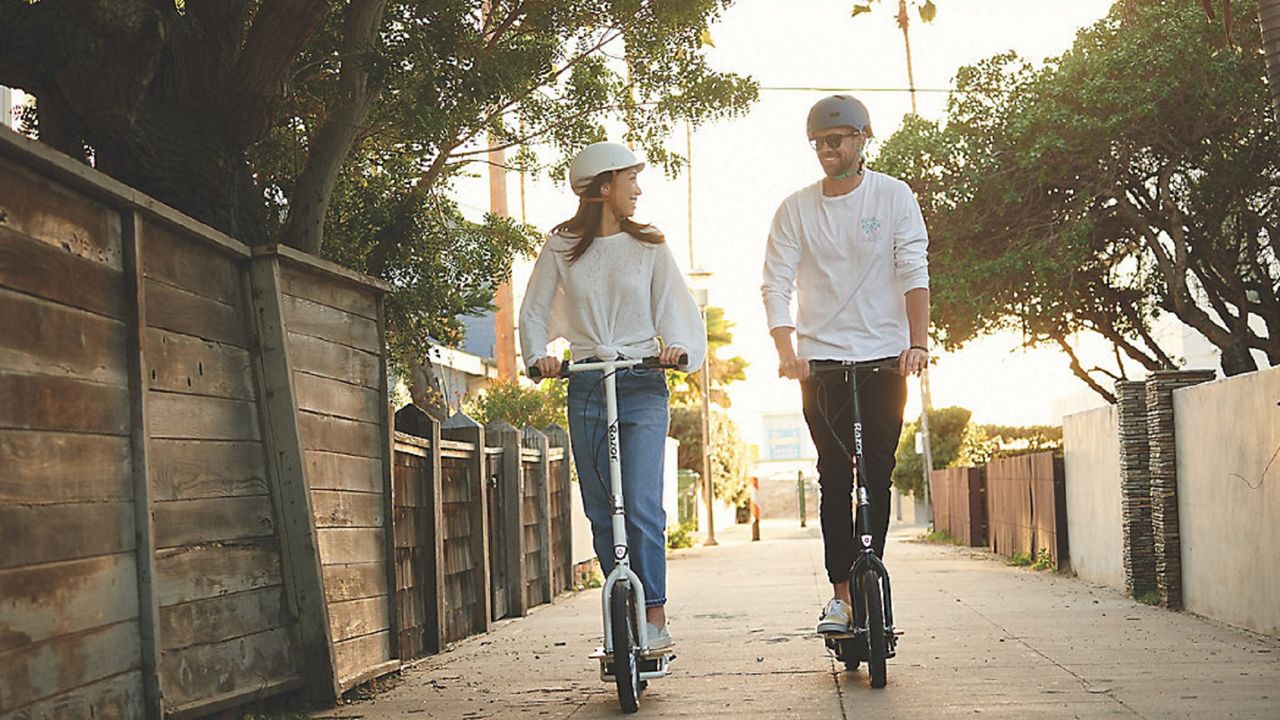CERRITOS, Calif. — It’s been 20 years since Razor ushered in a new era of two-wheeled mobility with its human-powered kick scooter. A staple of beach boardwalks, playgrounds, and skateparks that sparked many a childhood memory, the standup scooter with hand grips is now experiencing a renaissance.
Much like bicycles have seen during the pandemic, people are seeking more ways to escape the confines of their homes. Sales are up 82% year-over-year.
“There are many trends in our favor right now,” said Jim Wagner, chief executive of Razor USA, based in Cerritos. Among those trends: the need for economical, socially distanced travel, an interest in green technology, and “the generational effect, which happens when brands you grew up with as a child you come back to as an adult.”
Much like Hot Wheels, Magic 8-Balls, or Etch-a-Sketch, Razor is now a nostalgia buy for first-time parents seeking to replicate the scooter experience for their kids, as well as scooter-native young adults who grew up riding them and are looking for the grown-up version.
Driven by traffic congestion, millennials’ health consciousness, and their interest in scooters as a fun and recreational option for travel, the global scooter market has grown to about $20 billion this year, according to market analytics firm Grand View Research, based in San Francisco. The market is expected to increase at a compound annual growth rate of 26 percent through 2027.
That growth is due in large part to electric scooters, which Razor has been making for kids since 2004 and for adults the last ten years.
To celebrate its 20th anniversary, Razor introduced a slew of new e-scooters this year, including the EcoSmart SUP standup scooter with a wide deck that lets riders place both feet facing forward ($449), the EcoSmart Metro HD ($469) with a seat, and the lightweight and foldable E Prime III ($399).
Most recently, the brand launched the E300HD ($289), an upgraded version of its bestselling E300, the HD that uses a zero-maintenance, rear-wheel hub drive and has a top speed of 15 miles per hour.
Early next year, Razor will debut the C25 commuter scooter ($399) – a foldable model that can travel about 11 miles per charge and reach a top speed of 15.5 mph.
Three of the new models are being used in Razor’s scooter-share programs, which the company launched in Long Beach in 2018 and has since expanded to San Diego, Sacramento, and a dozen other cities, though not L.A.
“The share economy is a bigger cultural trend,” Wagner said. “It’s just a different mind set for the millennial generation.”
Like everything else this year, Razor was not able to celebrate its 20th anniversary as planned, with in-person events for people to ride its scooters and summer camps built around Razor scootering.
Instead, it’s promoted “Razor road trips” for people to pack up a scooter and take a spin, wherever it is they’re going.
“What we’re seeing is a Razor renaissance,” Wagner said. “All ages are coming back to scootering, and that means kids, teens, college students, and adults. The great benefit to this is people are outside, they’re being green, so the combination of those things is really working in our favor right now.”



